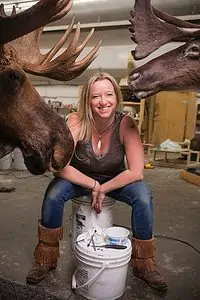
– Cindy Klippenstein, owner of Northfork Taxidermy
PHOTOS: Brendan Preston
Take a drive about five minutes up the North Klondike Highway, turn left up to a nondescript building, walk through the creaking door and you may feel like you’ve walked into an episode of Ripley’s Believe It or Not.
There are buckets of boiled skulls soaking in oil. Bears posed in a lunging growl. To the left, a moose head stares out blankly at you as you approach. Straight ahead, you find yourself looking into the face of a caribou with one antler removed, leaning against the side of its disembodied head. And hanging from a coat rack on the far wall, a lone duck, hung sideways, wings spread, trapped in flight.
You’ve just walked into Northfork Taxidermy.
“I hope it doesn’t smell too bad,” said Cindy Klippenstein, the 38-year-old owner/operator of the only full-time, full-service taxidermy shop in the territory. “It usually doesn’t smell at all,” she assures me.
Truth is, it doesn’t smell. At least not as much as a non-taxidermist might expect. The space is clean, if cluttered. The animals look exactly like what one might think a half-finished taxidermy project would look. And it all has the feel of a normal, rural business—just with carcasses, skulls and hides lying about.
Klippenstein is a small-business owner with a degree in fine arts degree, who spends her days fleshing, tanning and mounting hunting trophies as the Yukon’s only full-time taxidermist. And she couldn’t be happier.
“It’s a lot of hard grunt work,” she explains, as she moves from one bucket to another, checking on the status of various skulls. “But I love it more now than I ever have.”
Klippenstein arrived in the Yukon about eight years ago without any real plans about what life held for her, long-term. Most people know her as either a bartender from a local bar or as the woman who does taxidermy squirrel art. But about five years ago, she started the journey that led her to Northfork Taxidermy. She took a trip down to Texas and took a taxidermy course.
After she got back, Klippenstein applied at what was then the two taxidermists in town. It took some time and some persistence, but about three years ago, Russ Giesbrecht hired her on to help out at Northfork. She started out doing the grunt work.
“Boiling skulls for fifteen bucks an hour,” she remembers. “That kind of stuff.”
But, over time, Giesbrecht brought her more and more into the fold, helping her learn the craft in anticipation of her taking over the business. Then, about a year ago, he handed the business over to Klippenstein and she has been running it ever since.
Taxidermy, itself, is something lots of people have heard about, but few people know how it actually works.
For Klippenstein, she’s introduced to the animals when an outfitter or hunter pulls up and unloads a batch of animals. They come in various states of dress—frozen and barely touched, to fully gutted and ready for tanning.
She does about 200 animals a year with about half of those coming from local hunters and half coming from outside hunters who were in the Yukon on a guiding expedition. The vast majority of the work is just preparing the carcasses for shipping, because moving a dead animal across borders is no easy feat.
Going to Australia? No foliage on any mounts. Going to Denmark? Be sure there isn’t a single stitch of flesh left on the skull. Heading to China? You need to know the types of planes that fly, so you can ensure the antlers will fit through the cargo doors. Taxidermy, it turns out, is as much about logistics as it is about hides and glass eyes. Whether it’s for export or to be prepped and mounted for display, the animal goes through several stages.
First, the animal is “fleshed,” where it is basically turned inside out and the head, nose and every other piece is scraped and cleaned of meat, fat and everything else.
Next, the skull is boiled to get the rest of the meat off. Sometimes, if the skull is delicate, she sends the skulls over to a fellow taxidermist’s place to make use of his beetles, which eat the flesh off the skull but leave the incredibly delicate nose bones and other pieces fully intact.
Any hides are sent out for tanning before coming back and being stretched over animal-shaped mounts. (Imagine a dress form, but in the shape of moose or caribou or lynx.) That’s when the detail work starts and the animal starts to take shape.
“We like to leave them as they are,” said Klippenstein, pointing to a moose that was mounted and nearly ready for the hunter to pick up. “That one has gnarly ears. You can tell it was a fighting moose.”
Some taxidermists pretty the animal up and make it look like a perfect specimen. At Northfork, they like the animals to keep their distinctive features and their character.
“These are really personal things,” she explains. “Every animal is different. It’s really personal for my customers, too.”
Most animals that come through Klippenstein’s doors are moose, caribou, sheep or bears. But she also sees wolf, lynx and wolverine.
“One guy from the Northwest Territories is sending me otters!” she said excitedly.
Throughout the day, it is clear that Klippenstein loves what she does. But the work itself is a long way from people’s romantic notions.
“The busiest day I ever had, two trucks pulled up to the shop one morning, dropped off something like fifty animals and pulled away,” she remembered.
So, she started the methodical task of hauling the carcasses in, tagging and cataloguing them and contacting each hunter, one at a time.
“I remember it being midnight and I almost broke down. There were five more of these things to move and I didn’t know if I could do it.”
But she did.
She found the strength and drive all successful small-business owners seem to have, reached down and hauled the last five into the shop before heading home. As she starts packing up, closing the doors and preparing to leave, she muses about how long she will want to do this work.
“I guess I could hire someone to help out, but I don’t really want an employee,” she says. “This is what I want to do.”
If she ever does hire someone and finds free time, she talks about expanding her art beyond squirrels.
“Maybe a chicken on roller skates,” she muses with a smile. “But really, who has the time!”
You can learn more about Northfork Taxidermy by visiting www.northforktaxidermy.com.

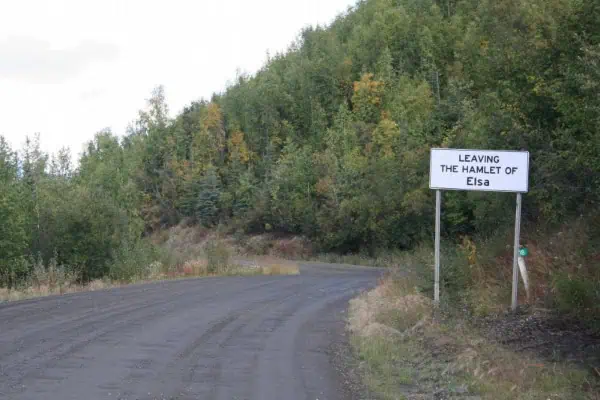
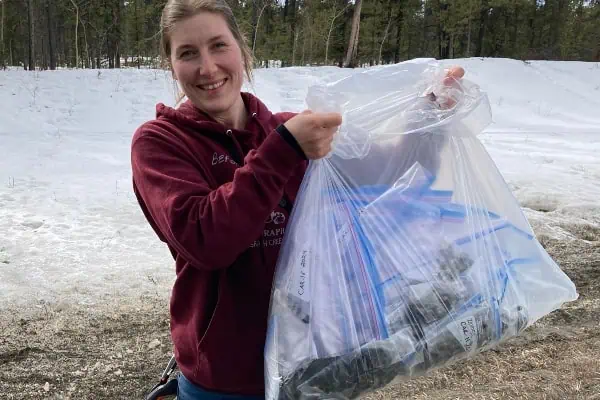
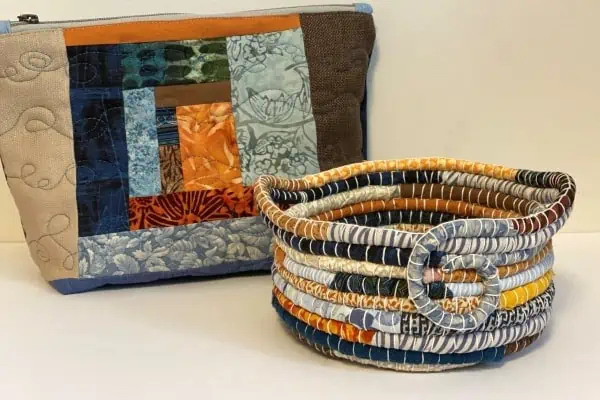
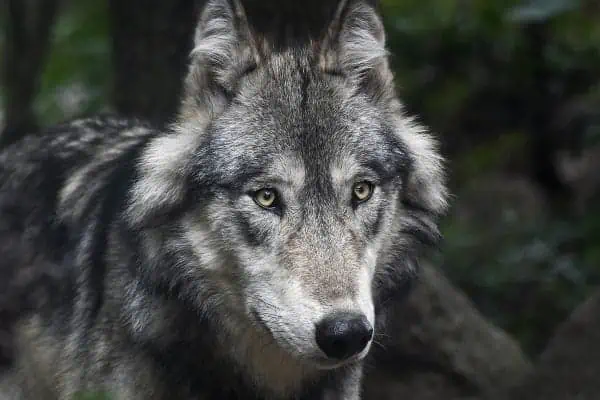
0.5